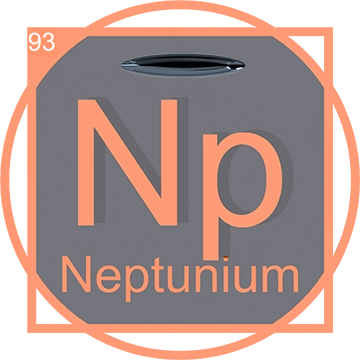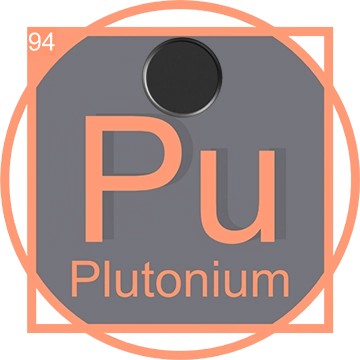A Comprehensive Guide to Astatine (At): The Elusive Element
Introduction to Astatine (At)
Astatine (At), the rarest naturally occurring element in the Earth's crust, is a chemical enigma wrapped in mystery. With its position in the halogen group of the periodic table, it occupies a unique niche in the realm of science and chemistry. This article delves into the discovery, properties, and scientific significance of Astatine, shedding light on why this element captures the fascination of scientists worldwide.
Discovery of Astatine

Astatine was discovered in 1940 by scientists Dale R. Corson, Kenneth Ross MacKenzie, and Emilio Segrè at the University of California, Berkeley. The discovery was groundbreaking, as it filled the last missing gap in the halogen series of the periodic table. This discovery not only marked a significant milestone in the field of chemistry but also highlighted the relentless pursuit of knowledge that drives scientific exploration.
The Role of Astatine in the Periodic Table and Science
As a member of the halogen family, Astatine (At) shares properties with other elements in this group, such as Fluorine (F), Chlorine (Cl), Bromine (Br), and Iodine (I). However, Astatine's scarcity and radioactive nature make it a subject of intense study rather than practical application. Its position in the periodic table is a testament to the element's unique characteristics and its contribution to advancing our understanding of chemical behaviors and properties.
Despite its rarity, Astatine plays a crucial role in nuclear medicine, particularly in targeted alpha therapy (TAT). This application underscores the element's potential to contribute to life-saving medical treatments, showcasing the broader implications of scientific discovery and research in the periodic table.
Properties and Applications of Astatine

Astatine's properties are fascinating yet challenging to study due to its extreme rarity and radioactivity. It exists in a few isotopes, all of which are radioactive, with Astatine-210 being the most stable with a half-life of approximately 8.1 hours. These properties limit direct application but open avenues for scientific research, particularly in the field of nuclear medicine and radiopharmaceuticals.
The potential use of Astatine in targeted cancer therapy exemplifies the intersection of chemistry and medical science, offering hope for innovative treatments. Despite the hurdles in handling and studying Astatine, ongoing research continues to uncover its possibilities, illustrating the endless frontier of science and the periodic table's mysteries.
Conclusion
Astatine (At) remains one of the most intriguing elements on the periodic table. Its discovery, properties, and potential applications highlight the ever-evolving nature of scientific inquiry. As researchers delve deeper into Astatine's secrets, its story exemplifies the pursuit of knowledge and the endless possibilities that await in the world of chemistry and beyond.
Production and Sources of Astatine
Unlike many elements, Astatine is not mined from the earth's crust through traditional mining processes due to its extreme rarity and radioactivity. Instead, Astatine is produced synthetically in particle accelerators or nuclear reactors. The most common method involves bombarding Bismuth (bismuth) with alpha particles to produce Astatine. This process highlights the innovative approaches scientists must undertake to study and utilize such a scarce element.
Given its synthetic production, there are no Astatine mines. Instead, research facilities equipped with nuclear reactors or particle accelerators are the primary sources of this element. Resources found alongside Astatine in these settings include other synthetic elements and isotopes, such as Neptunium (neptunium) and Plutonium (plutonium), which are also produced through nuclear reactions and serve various research and practical purposes in nuclear science.
Current Uses of Astatine

Today, the most prominent use of Astatine lies in the field of nuclear medicine, specifically in targeted alpha therapy (TAT). This treatment method uses the radioactive properties of Astatine to destroy cancer cells with minimal impact on surrounding healthy tissues. The ability of Astatine isotopes to emit high-energy alpha particles makes them particularly effective in treating certain types of cancers, such as those affecting the thyroid gland.
Despite its potential, the application of Astatine in medicine is still in the experimental stage, primarily due to its scarcity and the challenges in handling a highly radioactive substance. However, the ongoing research holds promise for future breakthroughs in cancer treatment.
The Future of Astatine in Science
The future of Astatine in scientific research and medical applications is highly promising, albeit challenging. Scientists are exploring innovative methods to produce Astatine in greater quantities and with more stability, aiming to make its medical applications more feasible. Advances in nuclear reactor and particle accelerator technologies may soon allow for the production of Astatine in sufficient amounts for broader medical use.

Moreover, the unique properties of Astatine have the potential to unlock new possibilities in the field of radiopharmaceuticals, beyond cancer treatment. Researchers are investigating its use in diagnosing diseases, as its radioactivity can help in imaging techniques to observe the functioning of internal organs more precisely. The future could also see Astatine playing a role in the treatment of other diseases, leveraging its ability to target and destroy diseased cells without extensive damage to the surrounding healthy tissue.
In conclusion, while Astatine's path from a laboratory curiosity to a medical marvel is fraught with challenges, its journey encapsulates the spirit of scientific exploration and innovation. As we stand on the cusp of new discoveries, Astatine represents not just a testament to human curiosity but also a beacon of hope for future medical advancements.













